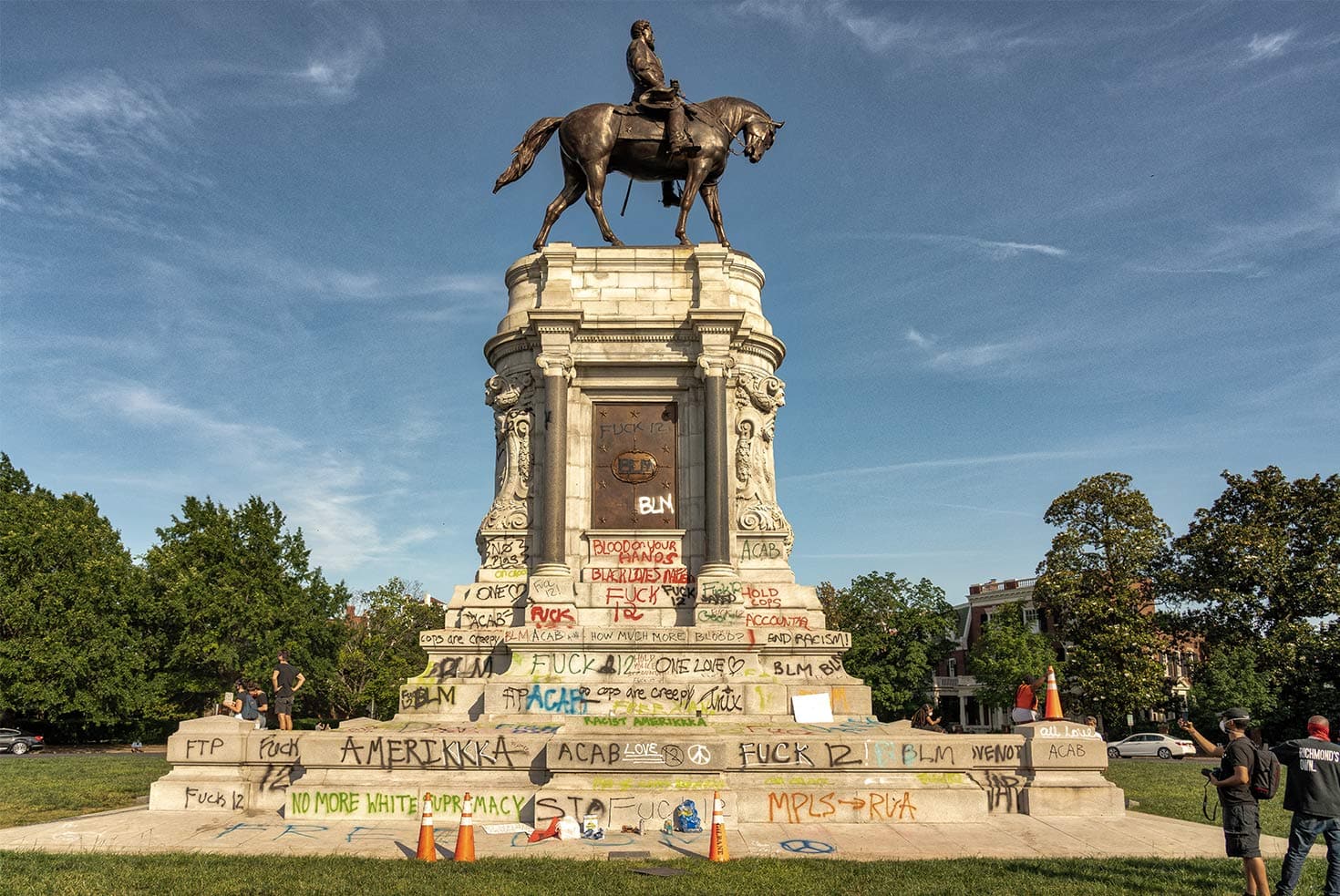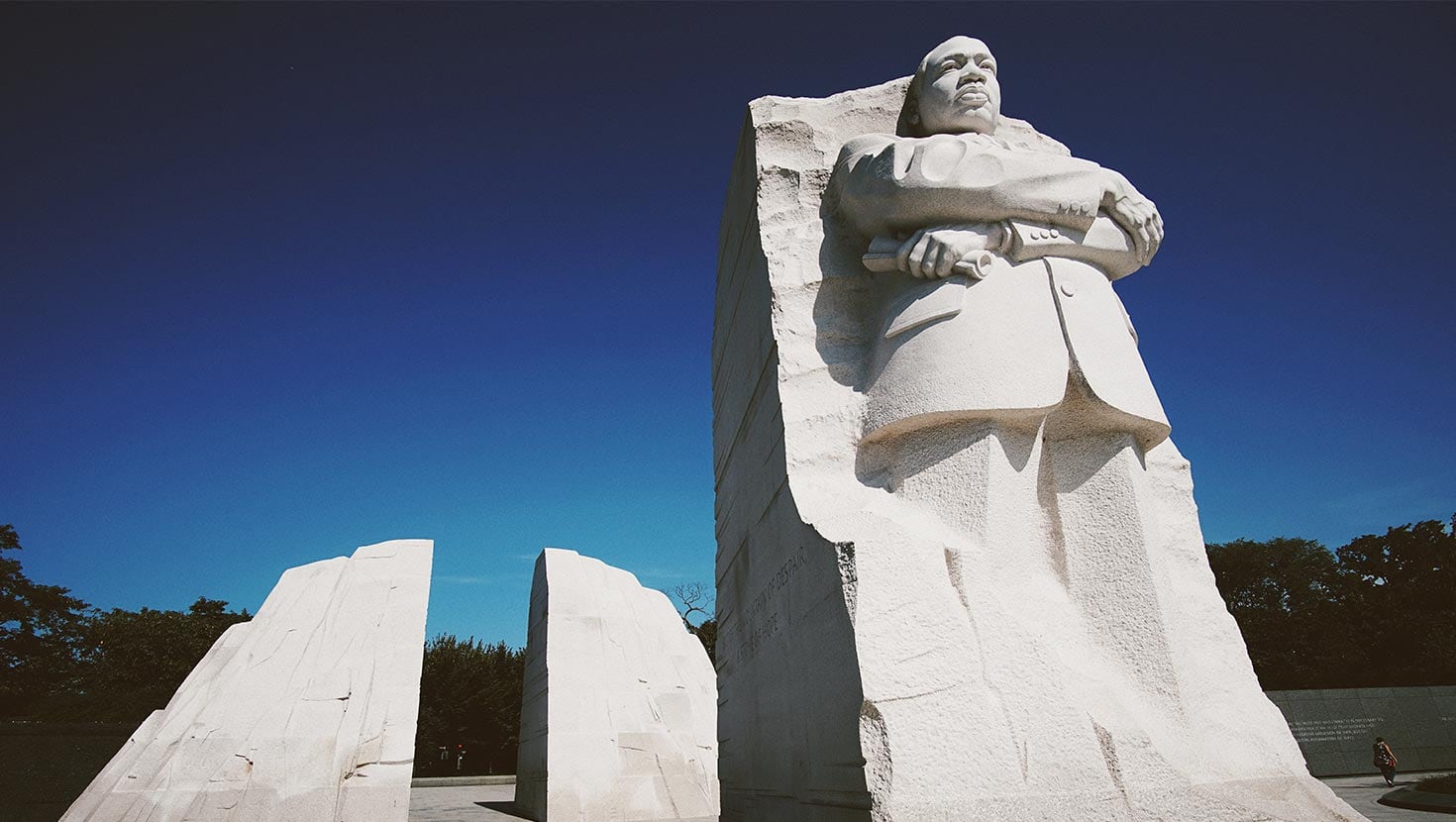
How to maximize your marketing budget (whatever it is)
Check out our easy-to-understand guide to help you make the most of your marketing budget (regardless of how big it is).

Immediately after the Civil War in 1865, a small number of commemorative memorials were erected for the Confederacy. They tended to honor soldiers who had died in battle, often quietly placed in cemeteries. Confederate General Robert E. Lee was invited to one such memorial dedication in Gettysburg, but he declined – saying, “I think it wiser not to keep open the sores of war, but to follow the examples of those nations who endeavored to obliterate the marks of civil strife.”
And yet today, 748 Confederate monuments stand – including many of Lee himself. In fact, most of them glorify leaders of the Confederacy as opposed to fallen soldiers. And they aren’t placed somberly in cemeteries, but erected conspicuously in public spaces – city squares and in front of state buildings – sometimes in states that didn’t even exist during the Civil War. Why is that?
Because symbols make a statement.

Surprisingly, most Confederate monuments were not erected immediately following the Civil War as a reflection on recent events. In fact, the vast majority of them were constructed half a century after the fall of the Confederacy, during two key periods of American history: the 1920s, and the 1950s/60s.
What is the significance of these periods? They’re when Jim Crow and the civil rights movement were each nearing their crescendos.
This suggests that these monuments have very little to do with paying tribute to the Civil War dead and everything to do with erecting monuments to a romanticized version of Antebellum racism – and by extension black disenfranchisement and segregation.
Critics may say that removing monuments like these is tantamount to “erasing history,” but the effort to remove them recognizes the power of symbolism. Because for better or worse, erecting a statue of in front of a state building is a powerful, effective, and durable symbol about the values and beliefs shared by a community.
These monuments were erected in iron and bronze for a reason – because a symbol is only as powerful as it is enduring. And to be sure, their message continues to ring in our national consciousness. Confederate statues have been pulled into the spotlight again in recent weeks, as many were targeted in the midst of Black Lives Matter protests after the death of George Floyd.

These protests constituted their own symbol – a signal that the nation is fed up with social injustice and racial inequities. A month ago, protests across the country were a top story, inspiring a meaningful national discussion. Our newsfeeds were flooded with black squares of solidarity and wordy manifestos professing a sudden alignment with the Black Lives Matter movement. The business world was not immune – with many of these statements coming from large, corporate communications teams.
One such statement came from Adidas: In a string of tweets last month, the company made a series of promises aimed to address racial injustice – including pledging $120 million to economically boost African-American neighborhoods.
This is undoubtedly a step in the right direction. But is it a durable symbol? Gestures from multinational conglomerates like this often strike us as disingenuous, in no small part because any “commitments to diversity” can be easily juxtaposed with a single photo of their all-white, all-male Executive Board and similarly homogenous Supervisory Board.
Now that the news cycle has moved on from the protests, those are the symbols that last – and they speak louder than a grand monetary gesture or a few impassioned tweets.
On the other end of the business spectrum, however, are purpose-driven leaders genuinely wanting to be a force of good in the world. Many businesses are recognizing they can and should be part of dialogues like this. Why? Because their employees demand it, their communities expect it, and their competitors are already doing it.
But how can business leaders go beyond a black square or a series of tweets? How can they send a message that is meaningful and lasting, and effects real change in their organization and the world?
Here are some ways to get started.

The most important first step of addressing any problem is to acknowledge that it’s a problem to begin with, and what role we play in it. You can do this in any number of ways in your organization – several of our clients have established book clubs, held informal town-hall-style meetings, or introduced new messaging channels to give employees a platform to have these discussions.
Ask yourself, are we creating an environment that encourages this type of dialogue? How does our approach to the Black Lives Matter conversation (and others like it) reflect our values?
Kinesis has long been proud of our hiring process – it’s robust, and effective, and has produced some incredible candidates. But even we have had to take a hard look at the homogeny of our team and question whether it has only produced candidates who look and think like us.
Consider your own hiring pipeline, and what opportunities you’ve created for diverse candidates. Where are you marketing open positions? How are you vetting applications? Who is involved in hiring decisions?
Another great way to promote equity in your organization is by being more transparent with where dollars are going. This includes salaries (which makes it immediately obvious if there is any kind of disparity), but also how the company is prioritizing investments across the board. Some organizations may opt to take it a step further and explore profit sharing opportunities so that all employees may be a part of the business’ success.
Not only will this convey definitively where a company’s priorities are, it will also attract the type of person who values that transparency.
It’s one thing to beat your chest and commit to being better. It’s another thing entirely to submit yourself to evaluation by a scrupulous third party. At Kinesis, we are proud to hold ourselves to B Corp standards as well as our own. This legal codification helps to hold us to a commitment to community over shareholder returns.
Much like open-book financials, this is a surefire way to communicate your organizational priorities – which can create meaningful change in any company.
A commitment to your values extends beyond the four walls of your office – it is reflected in who earns your patronage, and with whom you choose to do business.
Take a look at your vendors, partners, and clients to determine whether their values align with your own. At Kinesis, we recently made the decision to change where we bank – away from a corporate entity with hiring practices in diametric opposition to what we care about, and toward one that is community-oriented and minority-owned.
There is a place for social pressure in the business community in that hopefully, business leaders taking action will inspire other business leaders to take action. But we’ll also want to be careful not to shame those business leaders who are elsewhere on the awareness spectrum – since shame leads to defensiveness, which can turn into anger, which is unproductive.
Invite your colleagues and fellow professionals into the same thoughtful dialogue you’ve ignited within your team, and work together on strategies to move your organizations forward.
In many ways, the small business world is the antidote to Corporate America waxing philosophical with inauthentic, perfunctory gestures. Because it’s in these environments that a team is truly connected to a larger purpose, and where leadership can make a meaningful difference in the lives of the people it touches. Far from wordy PR manifestos drafted by large, out-of-touch corporate communications teams, small businesses have the power to change the world – and if we’re lucky, ultimately create a better and more equitable world for everyone.
For more information on how Kinesis helps small businesses be a force for good in the community, check out our About Page.
Get insights like this straight to your inbox.